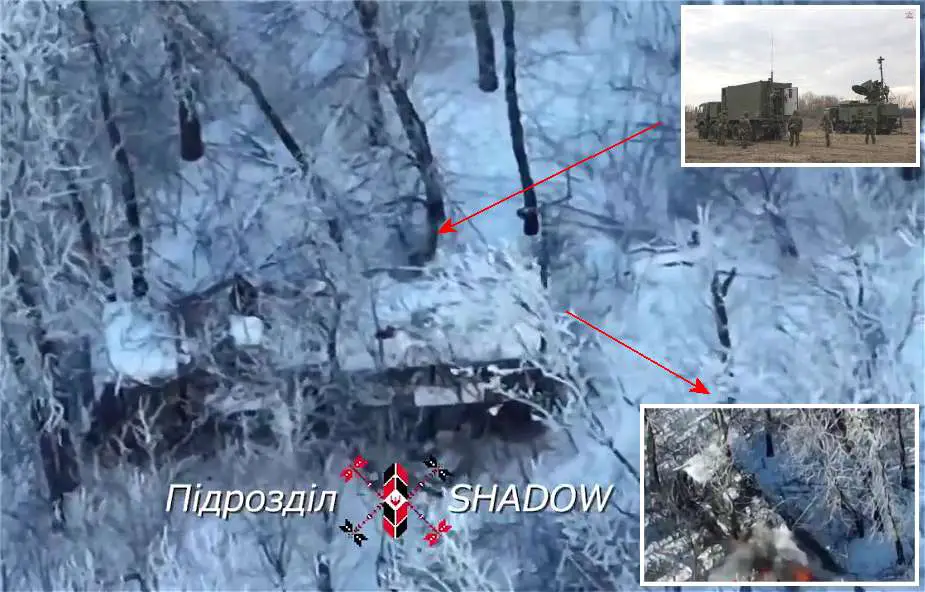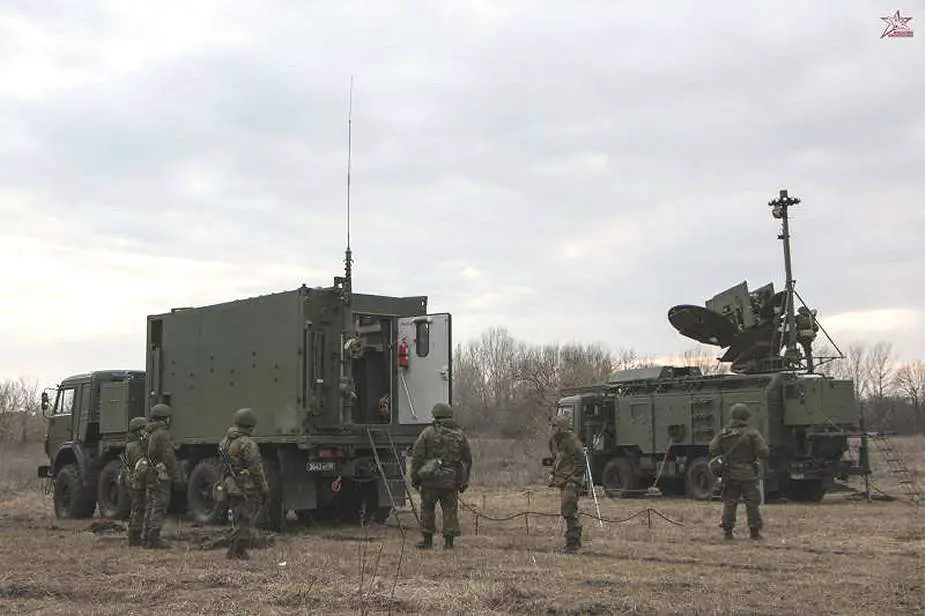Ukrainian Forces Destroy Rare Russian EW Vehicle RB-109A Bylina with US-donated HIMARS Rockets
According to a video published on social media on January 13, 2024, Ukrainian soldiers, using a US-donated M142 HIMARS (High Mobility Artillery Rocket System) guided by a drone, have destroyed a rare Russian electronic warfare vehicle known as the RB-109A Bylina.
Follow Army Recognition on Google News at this link

A Russian Electronic Warfare RB-109A Bylina system was destroyed by Ukrainian forces using HIMARS MLRS rockets guided by a drone. (Picture source Screen shot video footage)
The main function of the RB-109A Bylina Electronic Warfare System is to detect active enemy radio-emitting weapons both in the front line and in deep rear areas, at distances of up to 800 km, depending on the radio horizon and the height of the RTR modules. After collecting data, Bylina analyzes the frequency parameters of the detected sources and distributes tasks between electronic warfare systems based on their specifications.
The Russian military's use of electronic warfare (EW) in the Ukraine conflict is a critical element of their overall strategy, reflecting the modern battlefield's increasing reliance on electronic and cyber capabilities. Russian EW systems are among the most sophisticated globally, and in Ukraine, they have been employed to disrupt Ukrainian military communications and intelligence gathering. By jamming radio signals, GPS frequencies, and other communication channels, Russian forces aim to impair the Ukrainian military's ability to coordinate and communicate effectively. This disruption creates a 'fog of war,' making it challenging for Ukrainian forces to operate cohesively and respond promptly to Russian movements. The effectiveness of these tactics can significantly impede the operational capabilities of the Ukrainian military, leading to strategic advantages for Russian forces.
Drones are increasingly being used in modern warfare for a variety of roles, including the targeting of combat vehicles in conjunction with systems like the M142 HIMARS (High Mobility Artillery Rocket System) MLRS (Multiple Launch Rocket System). The integration of drones with such artillery systems enhances their effectiveness in several ways.
Firstly, drones provide critical intelligence and surveillance capabilities. They can fly over enemy territory, often undetected due to their small size and quiet operation. Equipped with high-resolution cameras and other sensors, drones can identify target locations, including the positions of enemy combat vehicles. This real-time intelligence is essential for accurate targeting.
Secondly, drones can laser-designate targets for precision strikes. Some drones are equipped with laser designators that can mark targets for guided munitions. When a drone identifies a combat vehicle, it can use its laser to "paint" the target, guiding the precision munitions fired from the HIMARS system to the target with high accuracy.
Thirdly, drones enhance the overall situational awareness of the forces operating the M142 HIMARS. By providing a live feed of the battlefield, drone operators can inform the artillery units about the dynamic changes in the enemy's position and strength. This information is vital for adjusting fire plans in real-time, ensuring that the artillery strikes are both effective and minimize collateral damage.

The RB-109A Bylina is a Russian Electronic Warfare system able to detect enemy radio-emitting weapons both in the front line and in deep rear areas, at distances of up to 800 km. (Picture source Topwar.ru)
The M142 HIMARS (High Mobility Artillery Rocket System) is renowned for its precision strike capabilities, characterized by its range and accuracy. This artillery platform can fire different types of munitions, with its range varying depending on the specific type of rocket or missile used. The standard rockets, such as the M270 family, can reach targets up to 70 kilometers away. For extended range, the HIMARS can employ the Extended Range Rocket, which increases the reach up to approximately 150 kilometers.
In terms of accuracy, the HIMARS is highly precise, primarily due to its use of GPS-guided munitions. These advanced guidance systems enable the rockets to hit targets with a high degree of accuracy, reducing the likelihood of collateral damage and increasing the effectiveness of each strike. The accuracy is further enhanced by the system's ability to integrate with modern battlefield management systems, allowing for real-time adjustments and coordination with other military assets.
News Russia Ukraine War























